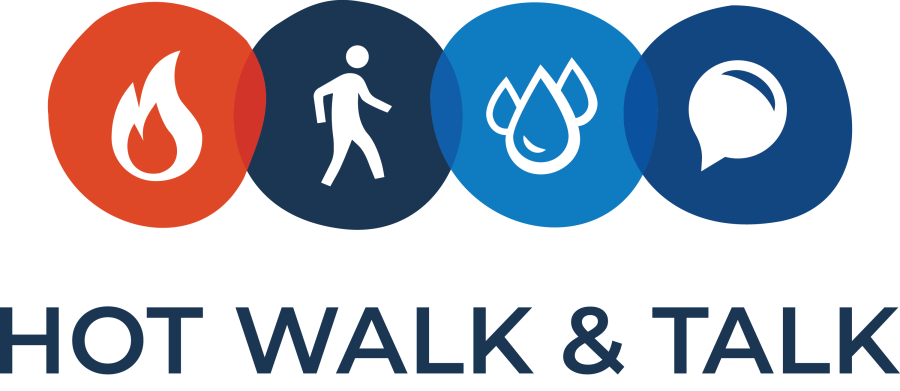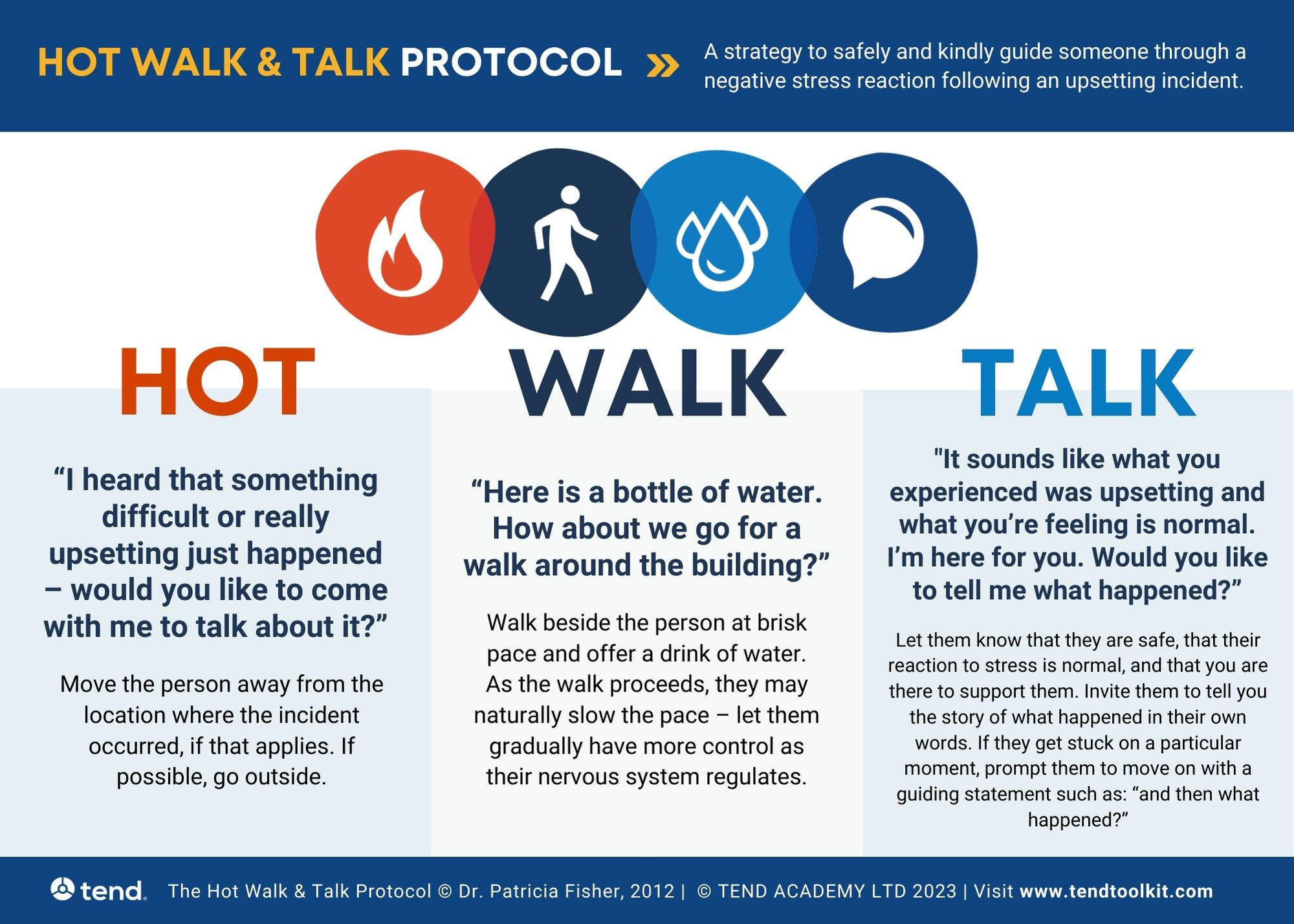The Hot Walk & Talk Protocol
A Strategy for Supporting Others After an Upsetting Incident
The Hot Walk & Talk Protocol

How can I support my colleagues when they are overwhelmed or dysregulated?

What strategies work to guide someone through a normal stress reaction?

How do I offer meaningful assistance without a background in crisis support?

Video Resources
In this 5-part video series, Françoise Mathieu explains the steps of the Hot Walk & Talk protocol and shares tips to implement this strategy in the workplace.

The Hot Walk & Talk (HWT) is a protocol for supporting others after a difficult, upsetting, or traumatic event. It was developed by organizational health specialist Dr. Patricia Fisher in 2012 and it provides three easy-to-remember steps to safely and kindly guide someone through a negative stress reaction.
Important Note
This protocol applies when there has been no physical injury and the person is not in shock. If the person has been physically hurt or is not stable enough to leave the area, follow emergency procedures and seek professional assistance.
HOT: “I heard that something difficult or really upsetting just happened – would you like to come with me to talk about it?”
Move the person away from the location where the incident occurred, if that applies. If possible, go outside.
WALK: “Here is a bottle of water. How about we go for a walk around the building?”
Walk beside the person at brisk pace and offer a drink of water. As the walk proceeds, they may naturally slow the pace – let them gradually have more control as their nervous system regulates.
TALK: “It sounds like what you experienced was really upsetting and what you’re feeling is normal. I’m here for you. Would you like to tell me what happened?”
Let them know that they are safe, that their reaction to stress is normal, and that you are there to support them.
Invite them to tell you the story of what happened in their own words. If they get stuck on a particular moment, prompt them to move on with a guiding statement such as: “and then what happened?”
The goal is to help them move through the whole narrative from beginning to the end – until they get to the present where they are walking in safety and are no longer feeling overwhelmed.
Why does the Hot Walk & Talk help?
It helps us metabolize through stress hormones
When we witness or experience a stressful event, our bodies are flooded with stress hormones. We may experience a range of reactions from dizziness, fear, panic, to numbness. Each person will have a different reaction to a stressful event – and these reactions are normal.
The steps of the HWT help us to metabolize through our stress hormones by physically moving and drinking water. Connecting with a supportive person also helps to calm and regulate our nervous system.
It connects us with a trusted other
Social support is the number one protective factor against developing long-terms stress effects following a traumatic experience (Fisher, 2015). By offering support to someone immediately following a traumatic event, we help to buffer them from long-term stress and reconnect them with their own coping skills.
For teams, having access to mutual support strategies like the HWT foster a healthier and psychologically safer workplace.
Follow-up
Once the person is feeling regulated and ready to return to work, ask the person what they would find helpful now. Do they need to phone a family member, get a snack, take a break, go back to work?
If your work requires an incident report, ask them how you can help. They may want you to fill in the report as they dictate it, or they may simply appreciate your support while they complete the report.
Let the person know that you remain available to them and encourage them to access addition supports that may be available if they would find them helpful
(e.g., Employee Assistance Programs, counselling, other community resources).


